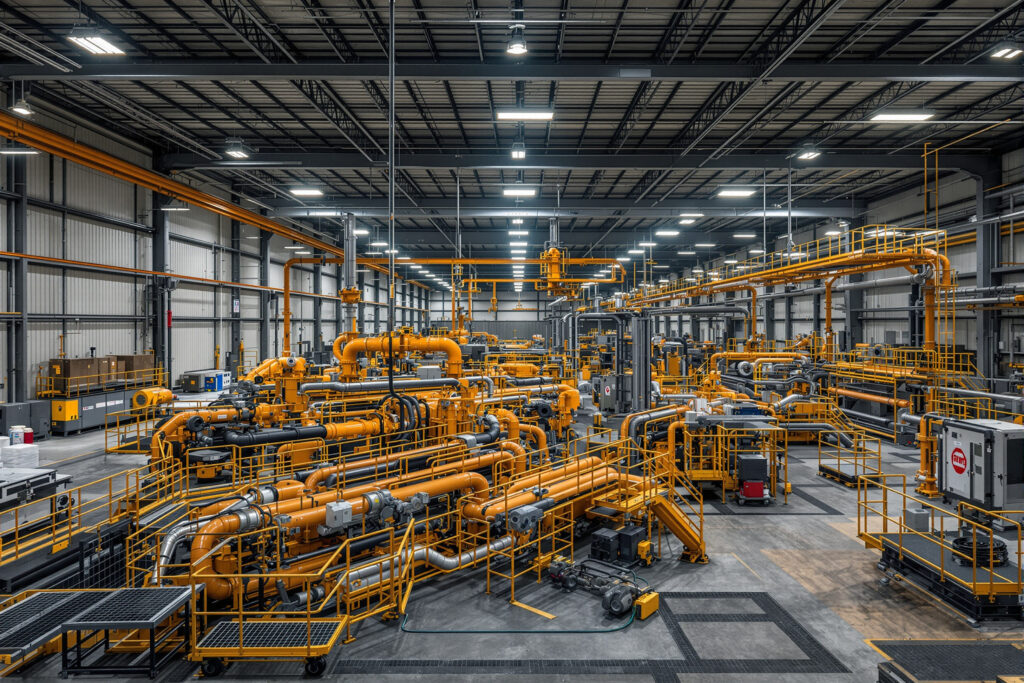Comparing Fabrication Methods: Modular, Vessel, & Structural Steel for Heavy Industries
In the demanding world of heavy industries—such as oil and gas, power generation, mining, and chemical processing—fabrication methods are critical for constructing robust, efficient infrastructure. Modular fabrication, vessel fabrication, and structural steel fabrication each offer unique approaches to building components like processing plants, pressure containers, and support frameworks. As of 2025, with rising demands for sustainability, speed, and efficiency, choosing the right method can significantly impact project timelines, budgets, and safety. This article explores each method, their applications in heavy industries, and a detailed comparison to help decision-makers evaluate options.
Modular Fabrication: Efficiency Through Pre-Assembly
Modular fabrication involves constructing standardized modules off-site in controlled factory environments, then transporting and assembling them on-site. This “plug-and-play” approach is popular for projects like offshore platforms, refineries, and power plants. Modules can include pre-wired electrical systems, piping, and equipment, reducing on-site labor significantly.
Key advantages include weather-independent production, enhanced quality control, and minimized site disruption. In oil and gas, modular skids (pre-assembled units for processing) allow for rapid deployment in remote locations. However, transportation logistics can complicate oversized modules, and design flexibility may be limited by standardization. Projects using modular methods often complete faster than traditional on-site builds.
Vessel Fabrication: Precision for Pressure Containment
Vessel fabrication specializes in creating pressure vessels—cylindrical or spherical containers designed to hold gases or liquids under high pressure—for applications like boilers, reactors, and storage tanks in chemical and petrochemical sectors. The process includes material selection (e.g., carbon steel or alloys), shell rolling, head forming, welding, and non-destructive testing (NDT) like radiography, governed by strict standards.
This method excels in safety-critical environments, ensuring vessels withstand extreme conditions like high temperatures or corrosive substances. Techniques like multi-layer winding for high-pressure vessels enhance durability but require specialized equipment. Drawbacks include longer lead times due to rigorous inspections and higher material costs for alloys. It’s indispensable for compliant, leak-proof containment.
Structural Steel Fabrication: Strength for Frameworks
Structural steel fabrication produces load-bearing components like beams, columns, and trusses from steel sections, essential for industrial buildings, bridges, and heavy equipment supports in mining and power sectors. The process entails cutting (plasma or laser), welding, and assembly, following industry standards.
Heavy structural steel provides superior strength for large-scale projects, outperforming lighter variants in durability but requiring complex welding. It’s versatile for modular integration but can face corrosion issues in harsh environments without coatings. Fabrication times are relatively quick for standard components, making it a backbone for safe, expansive structures.
Comparison of Fabrication Methods
Selecting the optimal method depends on project scale, site constraints, and regulatory needs. The table below compares modular, vessel, and structural steel fabrication across key factors, drawing from industry benchmarks in heavy sectors.
| Factor | Modular Fabrication | Vessel Fabrication | Structural Steel Fabrication |
|---|---|---|---|
| Primary Applications | Off-site modules for plants, platforms | Pressure tanks, reactors | Beams, frames for buildings/bridges |
| Timeline | 20–30% faster (factory + on-site assembly) | 3–12 months (due to testing) | 4–8 weeks per component |
| Labor Requirements | Lower on-site (50% reduction) | High skilled welding/inspection | Moderate; specialized for heavy welds |
| Quality Control | Excellent (controlled environment) | Rigorous (mandatory standards) | Good (industry standards) |
| Scalability | High (repeatable modules) | Moderate (custom per specs) | High (standard sections) |
| Challenges | Transport logistics | Material certification delays | Corrosion in harsh conditions |
| Best For | Remote/large-scale projects | Safety-critical containment | Load-bearing frameworks |
Modular offers speed for expansive sites, vessel prioritizes precision under pressure, and structural steel balances strength with versatility—often combined in hybrid projects like modular plants with integrated vessels and steel supports.
Final Thoughts
In 2025’s heavy industries, where downtime costs millions and sustainability is paramount, modular, vessel, and structural steel fabrication each play pivotal roles. Modular accelerates deployment, vessel ensures containment integrity, and structural steel provides foundational resilience. By comparing these methods against project specifics, industries can optimize for efficiency and compliance. Consulting certified fabricators early can unlock hybrid solutions, driving innovation in an era of energy transition.
FAQ
What is the main difference between modular and stick-built fabrication?
Modular involves off-site pre-assembly for faster, weather-protected construction, while stick-built occurs entirely on-site, often leading to longer timelines and higher weather-related risks.
How does vessel fabrication ensure safety in heavy industries?
It adheres to strict standards with processes like non-destructive testing and material certification to prevent failures under pressure, critical for sectors like petrochemicals.
When should I choose structural steel over other methods?
Opt for structural steel when building load-bearing frameworks that require high strength and customization, such as in mining infrastructure or power plant supports.
Can these fabrication methods be combined in one project?
Yes—many heavy industry projects use modular for overall assembly, vessels for containment, and structural steel for supports, creating integrated, efficient systems.
What factors drive costs in these fabrication methods?
Key drivers include material type (e.g., alloys for vessels), scale, transportation (for modular), and compliance testing, with savings possible through standardization.


